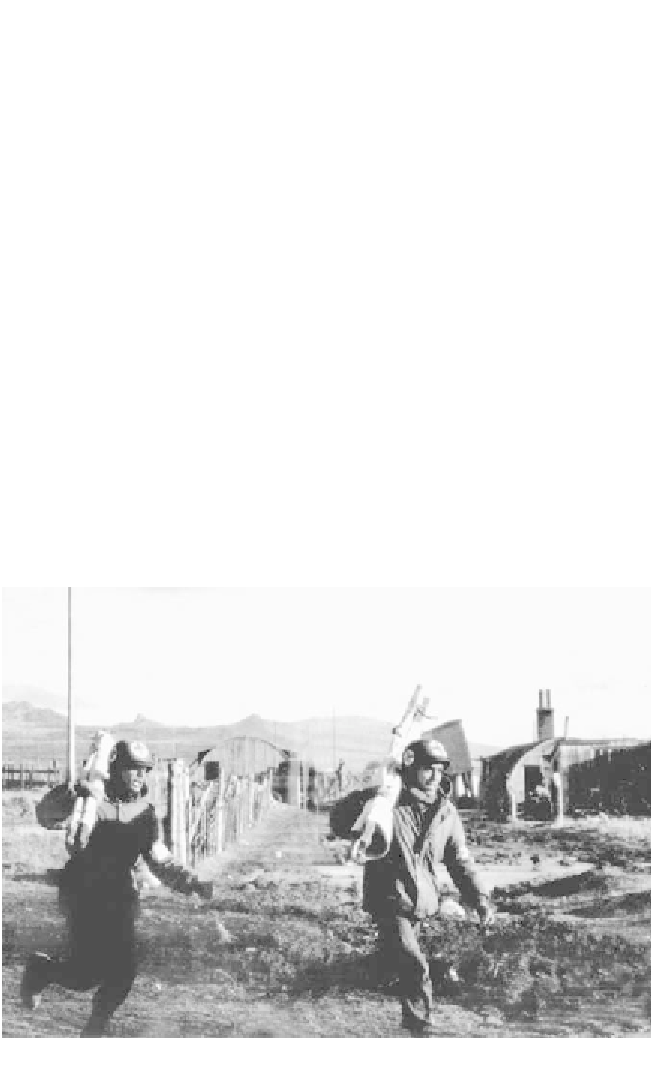Travel Reference
In-Depth Information
governor of the “liberated” Malvinas and redeployed his defense forces,
Argentina's crack combat units, to the Andean border with Chile.
Although both military governments of the bordering countries cooper-
ated in hunting down each other's fleeing leftists, Chile and Argentina
still disputed certain regions in the Tierra del Fuego, particularly the
Beagle Islands. Argentina worried about an invasion of General Augusto
Pinochet's Chilean army, because he was the only head of state in South
America to declare support for Great Britain. Consequently, the replace-
ment forces sent to the Malvinas were all poorly trained and equipped
conscripts. Many were not issued sufficient clothing to withstand frost-
bite as they waited in wet foxholes for British troops. General Menéndez
and his staff, meanwhile, hoarded supplies of meat and wine at their
headquarters in Port Stanley, which was renamed Puerto Argentino.
The British forces met little effective resistance. Before landing at the
islands, a British submarine sank the Argentine battleship
Belgrano,
and 800 sailors perished in the icy waters. An Argentine air force coun-
terattack sank one British destroyer, taking 200 sailors with it. As the
British fleet neared the Malvinas, however, most Argentine military
hardware remained safe at the mainland bases. British marines faced
minimal opposition, least of all from the Argentine officer class. Naval
captain Alfredo Astiz, soon to be infamous for his human rights abuses
Argentine medics during the war in the Malvinas
(Archivo Página 12)



